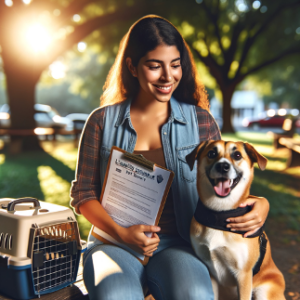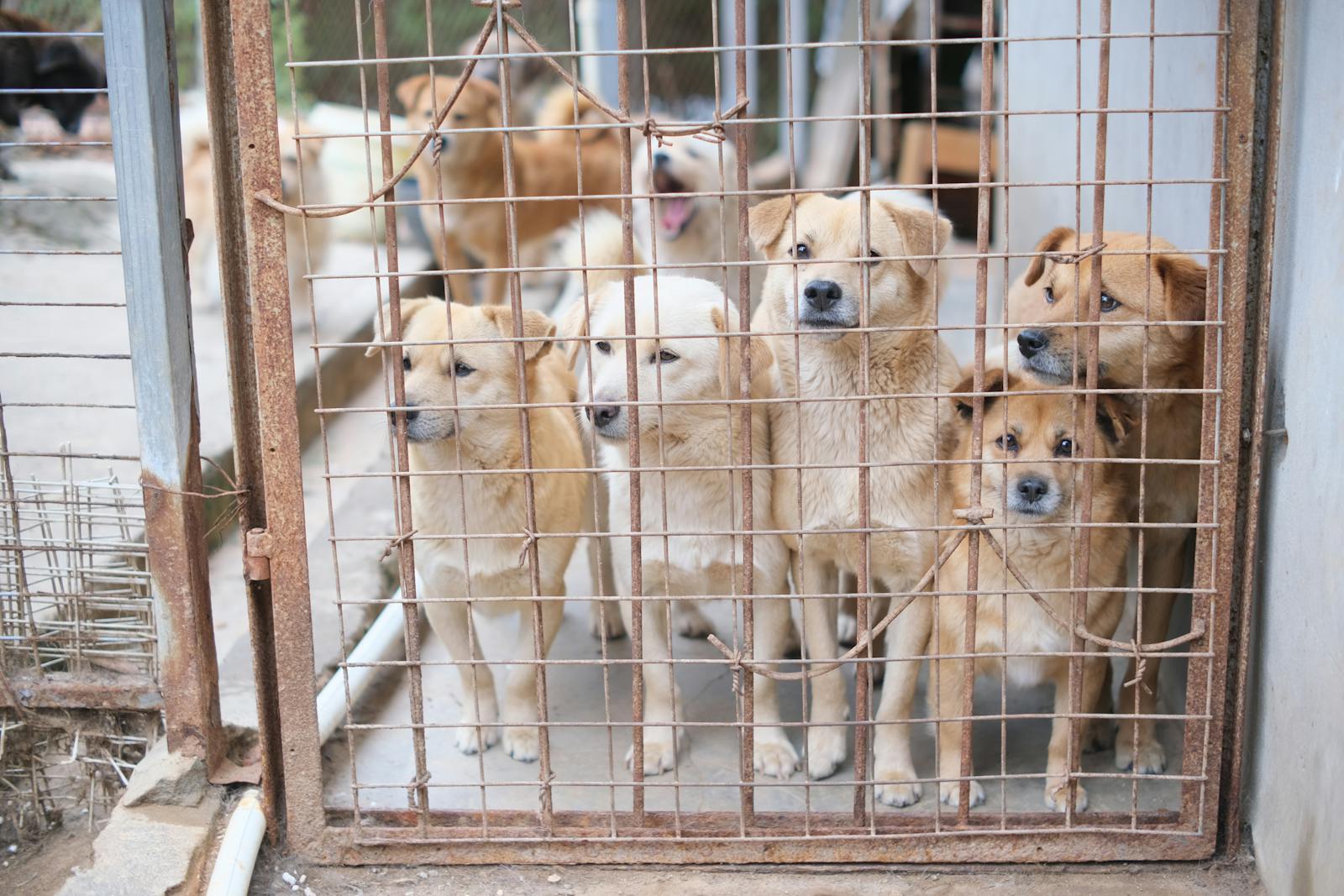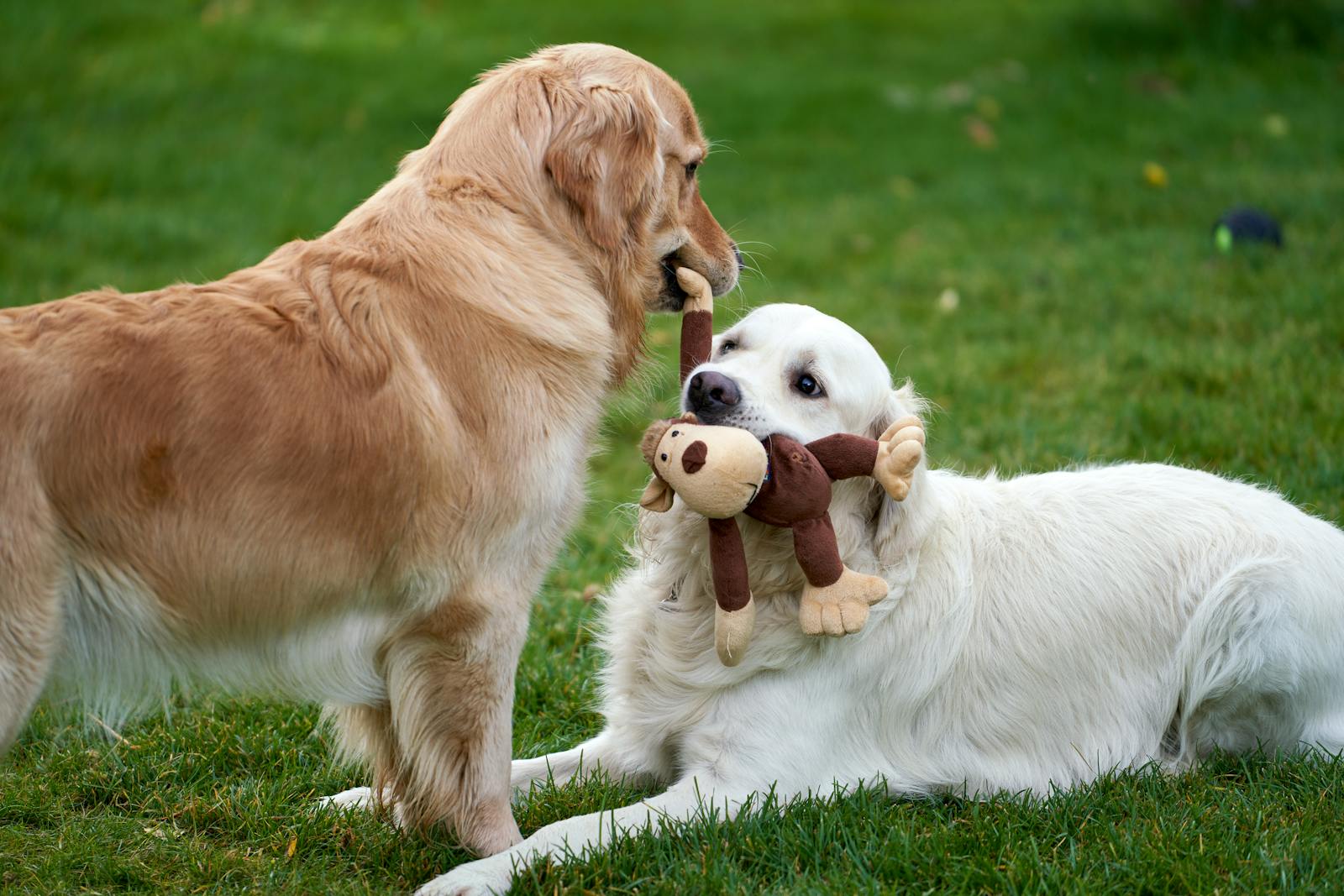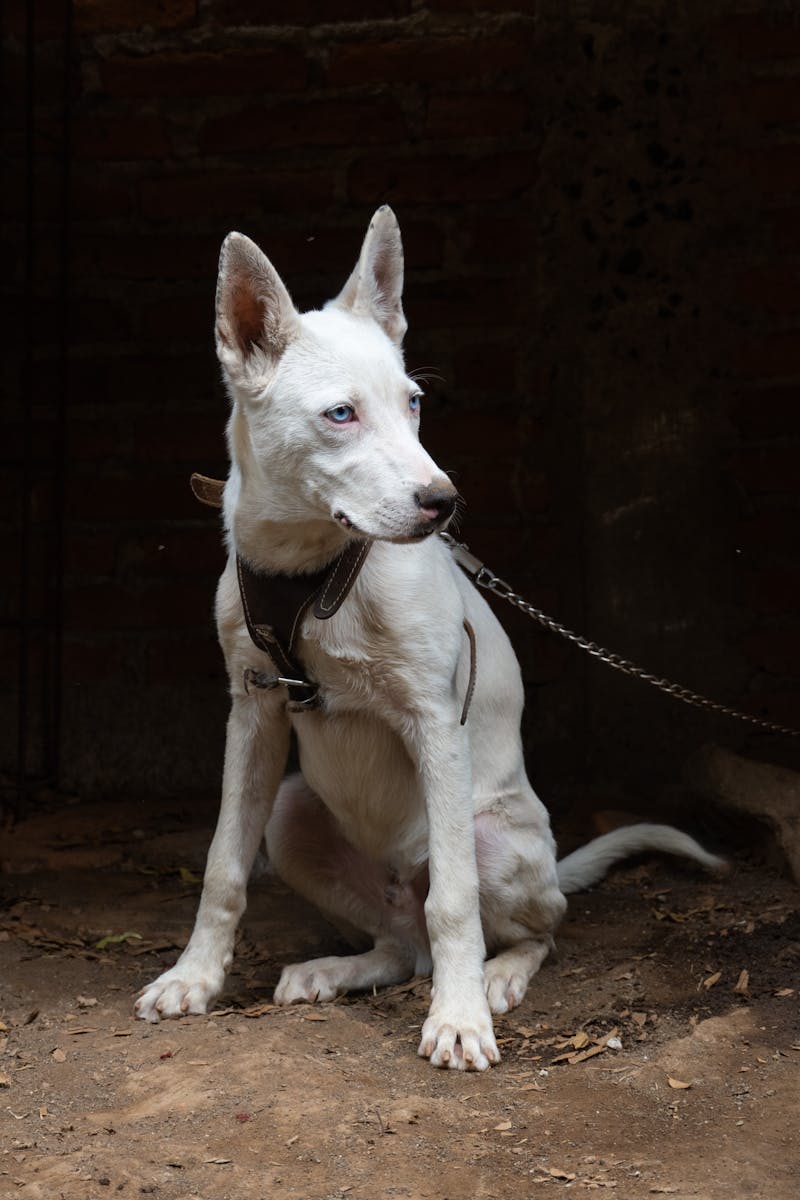Liability and Pet Injuries: Understanding Your Legal Responsibilities
Understanding Pet Owner Liability: Who’s Responsible?
When it comes to our furry friends, the bond we share is palpable. They bring joy, companionship, and an undeniable spark to our lives. However, as much as we love them, it’s crucial for pet owners to understand the legal responsibilities that come with caring for an animal. In this blog, we’ll explore the basic principles of pet owner liability and how pet owners can be held responsible for their pets’ actions.
The Basics of Pet Owner Liability
Pet owner liability is rooted in the concept of negligence, which means failing to act in a manner that a reasonable person would in similar circumstances. When a pet causes harm to another person or property, the owner may be held responsible, depending on several factors. Here’s what you need to know.
Strict Liability vs. Negligence
Two main legal theories govern pet owner liability: strict liability and negligence.
- Strict Liability: Under strict liability laws, a pet owner can be held responsible for injuries or damages their pet causes, regardless of whether the owner took reasonable precautions. This often applies to certain types of animals, especially those classified as inherently dangerous, like certain dog breeds. If a dog bites someone, the owner may be liable even if they had no prior knowledge of the dog’s aggressive behavior.
- Negligence: When it comes to negligence, the owner must be shown to have behaved unreasonably. For instance, if a dog escapes from an unsecure yard and bites a neighbor, the owner could be found negligent if it’s established that they failed to take reasonable measures to secure their pet.
What Factors Influence Liability?
Several factors can influence whether a pet owner is liable for their animal’s actions:
- Knowledge of Animal Behavior: If the pet owner knew or should have known about their animal’s dangerous tendencies, they may be held liable. For example, if a dog has bitten someone before and the owner fails to confine it or take necessary precautions, that owner is likely to be found negligent.
- Location of the Incident: Where the incident occurred can also affect liability. If the injury happened on the owner’s property, they may be held liable, especially if their pet was not confined or if they failed to warn others about potential dangers.
- Provocation: If the pet was provoked, liability may be diminished. For example, if a dog is taunted by a child and reacts aggressively, the owner might not be held fully responsible.
Tips for Pet Owners to Minimize Liability
So, how can pet owners ensure they are fulfilling their responsibilities and minimizing the risk of liability? Here are some actionable tips:
- Ensure Proper Training: Invest in professional training for your pet. A well-trained pet is less likely to cause incidents, thereby reducing your risk of liability.
- Secure Your Property: Make sure your yard is adequately fenced and that gates are secure. Regularly check for potential escape routes, as a pet that escapes could lead to accidents involving pedestrians or vehicles.
- Keep Vaccinations and Health Checks Up to Date: Not only is it good for your pet’s health, but ensuring your pet is vaccinated can protect others from potential diseases.
- Stay Informed About Local Laws: Familiarize yourself with local laws regarding pet ownership and liability. Some regions have specific regulations that dictate how pet owners should care for their animals.
- Liability Insurance: Consider obtaining pet liability insurance. This can offer peace of mind and provide financial protection in case of an incident.
Real-Life Implications
Imagine you’re walking your dog and it suddenly runs towards someone and knocks them over. The person may claim damages for injuries sustained, leading to a potential lawsuit. In this case, understanding the nuances of liability could significantly influence both your emotional and financial well-being.
Pet ownership comes with immense joy and fulfillment, but it’s also a responsibility that can carry legal implications. By being proactive and informed, pet owners can better navigate the complexities of liability associated with their beloved companions.

Types of Pet Injuries: Understanding the Risks
When it comes to our beloved pets, their playful nature often leads to injuries that can affect not just them, but also people and property around them. It’s essential for pet owners to recognize the various types of injuries that pets may inflict, including bites, scratches, and property damage. Understanding these types of injuries can help owners take preventive measures and manage their liability effectively.
Dog Bites: The Most Serious Risk
Dog bites are perhaps the most talked-about type of injury that pets can cause. According to the Centers for Disease Control and Prevention (CDC), approximately 4.5 million dog bites occur in the United States each year, with nearly 1 in 5 bites requiring medical attention. The implications of a dog bite injury can be severe, including:
- Medical Costs: Treatment for dog bites may involve emergency care, stitches, and sometimes even surgery. The financial burden of these medical expenses can fall squarely on the pet owner if they are deemed liable.
- Legal Consequences: In some cases, dog bites can lead to lawsuits, especially if the injured party suffers long-term effects, such as scarring or psychological trauma.
- Insurance Implications: Pet owners may face increased premiums or difficulty obtaining homeowner’s insurance after a bite incident.
Scratches and Claw Injuries: The Hidden Threat
Cats are often seen as less dangerous pets, but scratches can significantly impact their owners and others. Cat scratches may lead to:
- Infections: Cat scratch fever, caused by the bacteria Bartonella henselae, can result from an infected scratch. This illness can lead to fever, swollen lymph nodes, and fatigue, necessitating medical attention.
- Property Damage: In addition to physical injuries, cats may cause scratches on furniture, clothing, or other personal items, leading to financial loss for the owner.
- Legal Liabilities: While less common, if a cat scratches someone—especially if provoked—the owner may still face legal consequences.
Property Damage: More Than Just a Typical Mess
Our pets are often curious creatures, and this curiosity can lead to property damage that may not always be apparent. Common forms of property damage caused by pets include:
- Destruction of Belongings: Pets may chew on furniture, destroy garden plants, or even damage electronics, leading to costly repairs or replacements.
- Public Areas: Pets in community spaces—such as dog parks—can cause damage to public property, such as landscaping or equipment. If an owner is found responsible, they may be liable for restitution.
- Landlord Relations: For renters, property damage caused by pets can sour relations with landlords, possibly leading to eviction or loss of security deposits.
Outdoor Incidents: The Unexpected Threats
Injury doesn’t just occur in confined spaces. Pets can cause injuries to others while outside, including vehicular accidents. Consider the following scenarios:
- Chasing After a Small Animal: A dog that suddenly bolts into the street chasing a squirrel or a cat can cause serious accidents, jeopardizing not only their safety but also that of drivers and pedestrians nearby.
- Dog Fights: Uncontrolled aggression can escalate into fights between pets, leading to injuries for both animals and their owners.
- Injuries from Leashes: A pet owner who loses control of their dog on a leash can inadvertently cause harm to others, leading to potential liability claims.
Minimizing the Risk of Injuries
With this understanding of the various types of injuries pets can cause, pet owners can adopt strategies to mitigate risks:
- Training and Socialization: Investing in a good training program can prevent many aggressive behaviors. A well-socialized pet is less likely to bite or scratch.
- Supervision: Always keeping an eye on pets—especially around guests and children—can help prevent accidents before they occur.
- Physical Restraint: Using harnesses, leashes, or cages can secure pets in specific situations, minimizing their chances of causing harm.
- Effective Communication: Educating friends and family about your pet’s behavior, and encouraging them to approach with caution, can also prevent incidents.
- Regular Veterinary Visits: Ensuring that pets are healthy and up-to-date on vaccinations can prevent the spread of diseases that might result from bites or scratches.
Understanding the types of injuries pets can inflict not only aids in preventing these events but also enhances the responsibility pet owners must embrace. Each step taken to understand and mitigate potential risks is a significant move towards a safer coexistence for pets, owners, and the broader community.

Key Legal Terms in Pet Liability
When navigating the complexities of pet owner liability, understanding legal terminology is essential. Here are two fundamental concepts that every pet owner should know: strict liability and negligence.
Strict Liability
Strict liability is a legal doctrine that holds a pet owner responsible for any damage or injury their pet causes, regardless of the owner’s intention or precautions taken. This means that even if the owner exercised all due diligence, they could still be held liable if their pet causes harm.
Typically, strict liability applies to specific categories of animals, particularly those considered inherently dangerous. For example, certain dog breeds that have a reputation for aggression may fall under strict liability regulations in some jurisdictions. If this type of dog bites someone, the owner could be found liable even if they had no prior knowledge of their pet’s aggressive tendencies. This clear-cut framework ensures that victims of animal-related injuries can seek compensation without having to prove the owner’s fault.
Negligence
Negligence, on the other hand, revolves around the concept of a reasonable standard of care. In the realm of pet ownership, negligence occurs when an owner fails to act as a reasonably prudent person would in similar circumstances. To establish negligence, it must be shown that the owner not only had a duty to keep their pet under control but also breached that duty, resulting in harm to another party.
For example, if a dog escapes through an inadequately secured fence and bites a neighbor, the owner may be found negligent if it’s demonstrated that they did not take appropriate measures to secure the yard. In such cases, the court will consider whether the owner’s actions were reasonable based on what a typical pet owner might do in a similar situation.
Implications in Pet Liability Cases
Understanding these legal definitions is crucial for pet owners as they navigate potential liability situations. In strict liability cases, the focus is on the pet’s actions and the type of animal involved, which can lead to swift conclusions regarding culpability. In contrast, negligence cases require a deeper examination of the owner’s behavior and decision-making processes leading up to an incident.
Both strict liability and negligence play significant roles in determining the outcome of pet-related lawsuits. It illustrates the importance of understanding your responsibilities as a pet owner and the potential legal ramifications of your pet’s actions. By familiarizing yourself with these critical terms, you can better protect yourself and your loved ones from the complexities of pet liability law.

State Laws on Pet Injuries: Variations That Impact Pet Owners
In the ever-evolving landscape of pet ownership, understanding the legal ramifications of pet-related injuries is crucial for every responsible pet owner. The laws regarding pet injuries can differ significantly from one state to another, affecting how pet owners are held accountable when their pets cause harm. Below, we’ll examine some of the variations in state laws, providing concrete examples that illustrate their impact on pet owners.
Understanding Variability in State Laws
When navigating the complexities of pet injury laws, it is essential to know that some states adopt strict liability laws, while others follow a more lenient approach that often depends on the specifics of the incident. The nature of these laws can lead to varying outcomes for pet owners across the country.
- California: Known for its strict liability stance, California holds pet owners responsible for any injuries caused by their pets, regardless of prior knowledge of aggressive behavior. This means if a dog bites someone, even if the owner had no reason to believe the dog would act aggressively, they could still face legal consequences. This strict liability can lead to higher rates of claims against pet owners in California.
- Texas: In contrast, Texas operates under a mixed theory of negligence. If a dog injures someone, the owner can be held liable if they knew or should have known that their dog was dangerous. This means a pet owner may have defenses available if they prove they took reasonable precautions. However, the presence of “one-bite rule” indicates that a dog gets one free bite before the owner may be held strictly liable, complicating matters for those who are unfamiliar with the law.
- New York: New York employs a combination approach as well. If a dog has bitten someone before, the laws lean toward holding the owner strictly liable. However, if there’s no previous behavior indicating aggression, then negligence might come into play, allowing for a broader discussion about the owner’s precautions.
- Ohio: Unique amongst several states, Ohio follows a “one-bite rule” under certain conditions. In essence, if an owner is unaware of their dog’s aggressive tendencies and there has been no prior bite incident, they may not be liable. This particular statute allows some leeway for responsible pet owners; however, a failure to contain a known aggressive pet could result in severe consequences.
Impacts on Pet Owners
The laws surrounding pet injuries not only influence potential legal liabilities but also the way pet owners perceive their responsibilities. For example, a strict liability state like California might compel dog owners to invest more in training and fencing to mitigate any risks associated with pet injuries. Alternatively, in states like Texas and Ohio, where previous knowledge of a dog’s aggressive behavior is a significant factor, pet owners may feel more reassured if their pet has a clean record.
Case Example: Imagine a scenario in California where a dog has consistently displayed non-aggressive behavior yet suddenly attacks a passerby. In this case, the pet owner would likely face a lawsuit driven by strict liability, showcasing the potential financial implications of living in a strict liability state. Meanwhile, a similar incident in Texas might allow the owner to present a defense if they didn’t know their dog had dangerous tendencies, potentially easing the burden of liability.
Awareness and Preparation
Given the differences in state laws regarding pet injuries, it’s paramount that pet owners remain aware of the legal environment in their state. Here are some practical steps for pet owners:
- Research Local Laws: Pet owners should take the time to familiarize themselves with the specific regulations in their state. Knowing where you stand legally can significantly affect decision-making.
- Consult a Legal Professional: Engaging with an attorney who specializes in animal law can provide clarity on potential liabilities and proper preventive measures.
- Invest in Training: Regardless of state laws, investing in professional training can not only promote safety but also reduce the likelihood of incidents leading to legal disputes.
- Join Local Pet Owner Organizations: These groups often share valuable resources and information about local laws, enhancing a pet owner’s understanding of their responsibilities.
Understanding state laws on pet injuries is not just about compliance; it’s about safeguarding the well-being of your pet and those around you. Keeping informed ensures you can enjoy your time with your beloved animal while navigating the legal landscape responsibly.

The Importance of Liability Insurance for Pet Owners
As a pet owner, you’re not just responsible for the day-to-day needs of your furry friend; you’re also accountable for their actions. While ensuring your pet is well-behaved and well cared for can help mitigate risks, having liability insurance is crucial in protecting yourself from potential claims and lawsuits. Understanding the options available for pet liability insurance can provide peace of mind as you navigate the joys and responsibilities of pet ownership.
Coverage Options for Pet Owners
When exploring pet liability insurance, you’ll find several coverage options designed to protect you from financial loss due to your pet’s actions. Here’s a breakdown of what you can expect:
- General Liability Coverage: This is a foundational aspect of pet liability insurance. It typically covers medical expenses and legal fees associated with injuries or damages caused by your pet. For instance, if your dog bites someone at the park, this coverage can help you settle claims without facing out-of-pocket expenses.
- Bodily Injury Coverage: Should your pet injure someone and the injured party decides to pursue legal action, bodily injury coverage comes into play. This type of insurance usually covers medical bills, rehabilitation costs, and any settlements the court may award to the victim.
- Property Damage Coverage: If your pet damages someone else’s property—say, your cat scratches a neighbor’s car or your dog chews on a friend’s favorite pair of shoes—this coverage can help you settle for the damages.
- Medical Payments to Others: This coverage can be beneficial even if your pet hasn’t been proven to be at fault. For example, if someone is injured while visiting your home and they wish to avoid a lengthy claim process, your insurer may cover their medical bills directly under this provision.
- Notable Exclusions: It’s essential to read the fine print. Many insurance policies may exclude specific breeds that are perceived as high-risk or limit coverage based on your pet’s behavior history. It’s wise to verify what is included and what isn’t with your insurance provider.
Why Pet Liability Insurance Is Essential
The unpredictability of pet behavior makes liability insurance a cornerstone of responsible pet ownership. Accidents can happen, and even the most well-trained animals can act out in unforeseen situations. Here are a few compelling reasons to consider investing in liability insurance:
- Financial Protection: Veterinary bills, legal fees, and potential settlements can escalate quickly. Having liability insurance can shield you from significant financial burdens and provide peace of mind. According to the Insurance Information Institute, pet liability insurance can help homeowners avoid costs that average thousands of dollars when a claim arises.
- Increased Accessibility to Pet-Friendly Spaces: Some rental properties and public places may require proof of pet insurance for access. Having liability coverage can open up more options for living arrangements and outings.
- Confidence in Social Settings: Knowing you have coverage can allow you to relax while enjoying social activities with your pet. Whether it’s a dog park picnic or a family gathering, liability insurance can enable you to communicate and engage without overcoming the fear of what could happen.
Real-World Examples of Claims
Take, for example, the case of a dog that unexpectedly lunges at a passerby, leading to the individual falling and suffering an injury. Without liability insurance, the responsible pet owner could end up paying direct out-of-pocket costs, which can reach thousands depending on the severity of the injury.
In another scenario, if your pet causes an accident that damages a neighbor’s property, liability coverage can alleviate your stress and ensure that the affected party gets fair financial compensation.
By understanding the importance of liability insurance, you’re taking proactive steps to protect yourself and your assets while fostering a responsible and satisfying environment for your pet.

FAQs About Pet Injuries
When a pet causes injury to another person or property, it can be an overwhelming situation for pet owners. To help navigate these challenging experiences, we’ve compiled common questions and concerns that arise regarding pet injuries and liability.
What Should I Do If My Pet Injures Someone?
The first step in the event of an injury is to ensure the well-being of the injured party. If someone is injured, provide assistance if it’s safe to do so and seek medical help if necessary. Document the incident by taking notes on what happened, including the date, time, location, and nature of the injury. Photographic evidence can also be invaluable, so don’t hesitate to capture the scene. Following this, notify your insurance provider, as they can advise on coverage for the potential medical expenses or legal claims.
Am I Automatically Liable If My Pet Injures Someone?
Not necessarily. While pet owners can be held liable under strict liability laws, your level of responsibility often depends on the specific circumstances of the incident. If the injured party provoked your pet, for example, your liability could be lessened. Additionally, if you can demonstrate that you took all reasonable precautions to manage your pet’s behavior, it may play a significant role in any legal outcome.
How Can I Protect Myself from Liability?
Proactivity is key when it comes to minimizing liability risks. Here are some crucial steps to take:
- Socialize and Train Your Pet: Regular socialization and training are vital in reducing aggressive behavior and ensuring your pet is well-mannered in public settings. Consider enlisting a professional trainer if you’re unsure where to start.
- Leash and Control: Always use a leash when walking your dog in public spaces. This not only keeps your pet from running off but helps you maintain control over them.
- Beware of Dog Signs: If your pet has a history of aggression, consider posting “Beware of Dog” signs to warn visitors and passing pedestrians about potential dangers.
- Insurance Coverage: Ensure your home or renters’ insurance includes liability coverage for pet injuries. This can provide financial protection against lawsuits that may arise if your pet injures someone.
What Are Potential Consequences of a Pet Injury?
If a pet injures someone, the consequences can vary depending on the severity of the injury and how the situation unfolds. Possible outcomes include:
- Medical Bills: The injured party may seek compensation for medical expenses related to their injury.
- Legal Action: A lawsuit may follow if the injured party believes they are entitled to damages.
- Behavioral Evaluation: In more severe cases, local authorities may require your pet undergo a behavioral assessment or even be quarantined.
Can I Be Held Liable for My Pet Injuring Another Animal?
Yes, liability can extend beyond human injuries to damages inflicted on other pets. If your dog injures another pet, the owner of the injured animal can pursue damages for veterinary bills and other related costs. As a responsible pet owner, ensuring your pet is socialized and properly supervised can help prevent these types of incidents from occurring.
Pet ownership brings a wealth of joy, but it comes with its share of responsibilities, including understanding the nuances of liability. By taking the necessary steps to mitigate risks and ensuring you are well-informed, you can better protect yourself and your beloved pet.

Case Studies: Real-Life Examples of Pet Owner Liability
As pet owners, we cherish the moments we spend with our animals, but, as illustrated by various case studies, the realities of pet owner liability can sometimes tarnish the joy of pet companionship. Here, we delve into real-life examples and hypothetical scenarios that highlight the complexities and implications of pet owner liability.
Case Study 1: The Off-Leash Adventure
Scenario: Sarah was walking her friendly Labrador off-leash in a local park when her dog, excited by a passing cyclist, ran towards them, inadvertently knocking the cyclist over. The cyclist suffered a sprained wrist and claimed damages from Sarah.
Outcome: In this case, Sarah faced liability under negligence laws. The court found that she failed to exercise reasonable care by allowing her dog to roam without a leash in a public area where it was mandated. This incident serves as an important reminder that understanding and following local leash laws is crucial in minimizing liability risk.
Lesson Learned: Always familiarize yourself with leash laws in your area and adhere to them. A simple act of keeping your pet leashed can prevent unfortunate incidents and possible legal consequences.
Case Study 2: The Unfriendly Encounter
Scenario: Tom owned a Rottweiler that had previously shown aggressive tendencies. One day, while visiting a friend, the dog bit a guest who was unknowingly provoking it by trying to pet it. The injured party decided to sue Tom for medical expenses.
Outcome: In court, Tom’s prior knowledge of his dog’s aggressive behavior played a significant role in the judgment. The jury found him liable under strict liability laws, as Tom had failed to take appropriate actions to secure his pet properly or warn guests. Consequently, he was held responsible for the victim’s medical costs and pain and suffering.
Lesson Learned: Knowing your pet’s behavior is crucial. If an animal has exhibited aggressive behavior in the past, proactive measures should be taken to ensure the safety of others, including providing warnings and securing the animal appropriately.
Case Study 3: Property Damage
Scenario: Lisa’s cat often roamed outside, and one evening, it damaged her neighbor’s garden, uprooting several plants. The neighbor filed a claim against Lisa for the cost of replacement plants.
Outcome: Here, the court had to consider whether Lisa exercised reasonable care in containing her cat. The judgment ruled in favor of the neighbor, holding Lisa liable for the damages caused by her pet. This incident raised important discussions around property damage and pet ownership responsibilities.
Lesson Learned: Even small pets can lead to unexpected liability. Ensuring your pet is properly contained on your property can protect both your pet and your neighbors from damages.
Hypothetical Case: The Dog Park Dilemma
Scenario: Michael frequently took his two dogs to a dog park. One day, during play, one of his dogs bit another dog while competing for a toy. The injured dog’s owner sought compensation for veterinary bills.
Outcome: In this hypothetical but plausible scenario, Michael could be held responsible under negligence if it could be proven that he was careless in supervising his dogs. If the court determined that Michael failed to intervene promptly to prevent aggressive play, he could be required to cover damages.
Lesson Learned: Active supervision at dog parks is vital. Knowing your dog’s behavior and stepping in when necessary can prevent accidents and protect you from potential liability.
Key Observations
These case studies illustrate the multifaceted nature of pet owner liability. From understanding local laws and recognizing your pet’s behavior to ensuring adequate supervision, being an informed pet owner can protect both your pet and your financial interests.

Preventive Measures: Practical Tips for Pet Owners to Mitigate the Risk of Injuries
With the understanding that pet owner liability can have real-life implications, it is equally important to focus on preventive measures. Responsible ownership goes beyond just being aware of the laws; it involves taking actionable steps to ensure that our pets are safe and well-behaved. In this section, we’ll explore training, socialization, and overall responsible pet ownership.
The Importance of Training
Proper training is the cornerstone of responsible pet ownership. Not only does it teach your pet essential commands, but it also helps them understand acceptable behavior, which reduces the likelihood of aggressive or harmful incidents. Here are some effective training tips:
- Enroll in Professional Classes: Investing in professional dog training classes can provide your pet with structured training and socialization. Certified trainers use evidence-based methods that can mold your pet’s behavior positively.
- Consistency is Key: Reinforce commands consistently. Use clear, firm commands and reward your pet for good behavior. Inconsistency can confuse your pet and lead to accidents.
- Practice Commands Regularly: Implement training sessions in your daily routine. Short, frequent sessions are more effective than long, infrequent ones. This keeps your pet engaged and helps reinforce learned behaviors.
- Focus on Recall Training: Teaching your dog to come when called can prevent potentially dangerous situations. This skill is invaluable if your pet is off-leash and encounters something distracting.
Socialization: A Vital Component
Socializing your pet is crucial in preventing aggressive behaviors. Pets that are not adequately socialized may react negatively to new experiences, people, or other animals. Here are some socialization tips:
- Introduce New Experiences Early: Begin socialization as early as possible. Expose your pet to different environments, people, and animals during their formative months.
- Organized Playdates: Schedule playdates with other well-mannered pets. This supervision teaches your pet how to interact appropriately with others.
- Visit Public Places: Take your pet to parks or pet-friendly stores where they can encounter various sounds and sights. This exposure helps them adapt to new situations calmly.
- Observe and React: Watch how your pet interacts with others. If they show signs of fear or aggression, don’t force interactions. Gradually desensitize them in a controlled manner.
Responsible Ownership Practices
Beyond training and socialization, responsible ownership plays a pivotal role in ensuring the safety of your pet and those around them. Consider these practices:
- Regular Veterinary Care: Keep your pet’s vaccinations up to date to prevent the spread of disease and to ensure they are fit for social interactions.
- Secure Living Environment: Keep your living area pet-proofed and ensure gates and fences are secure. An escape can lead to accidents or dangerous encounters with other animals.
- Be Mindful of Off-Leash Areas: If you choose to take your dog off-leash, make sure they are well-trained and under your control. Always have a leash handy to quickly restrain your pet if necessary.
- Educate Yourself and Your Family: Share knowledge about pet behavior and handling with all family members. Understanding how to approach and behave around pets can prevent mishaps, especially with children.
- Community Engagement: Get involved in local pet-friendly events. Interaction with other pet owners can be a great resource for sharing tips and experiences related to responsible pet ownership and liability issues.
Conclusion
Being a responsible pet owner requires diligence in training, socialization, and maintaining a safe environment. By implementing the above preventive measures, you can significantly mitigate the risk of your pet causing injuries and, in turn, reduce your potential liability. Remember, a well-prepared owner is a key ingredient to a happy, well-adjusted pet.
news via inbox
Nulla turp dis cursus. Integer liberos euismod pretium faucibua





